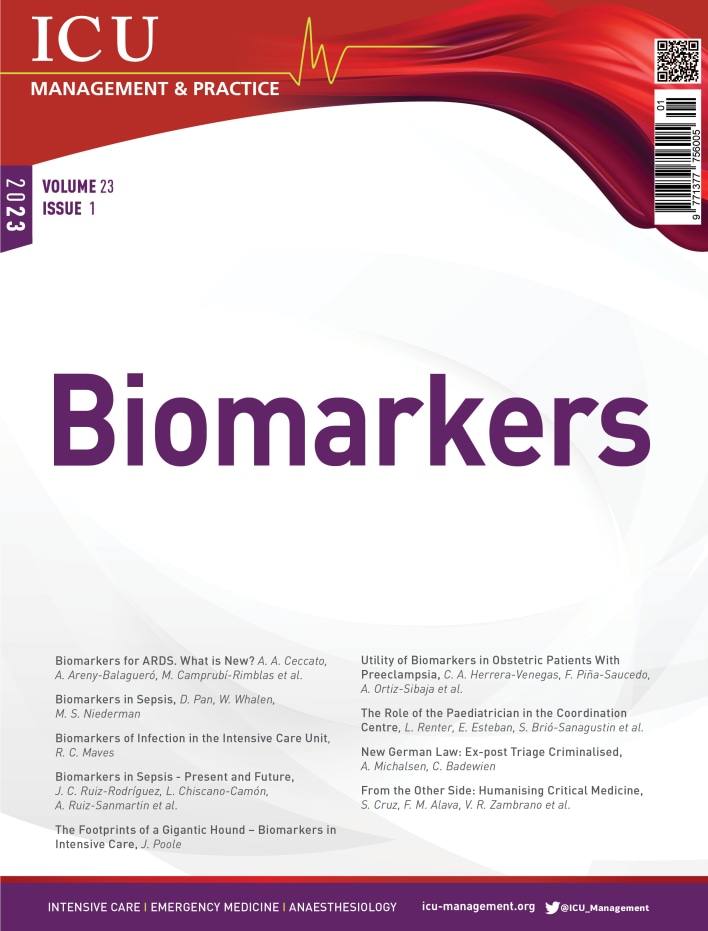Volume 23 - Issue 1, 2023
- ICU
- 13/03/2023
Change content default value
READ MORE
Biomarkers are quantifiable indicators of physiological or pathological processes in the body. They can be useful in establishing a diagnosis, assessing disease progression and a patient's condition and guide therapeutic interventions. However, a great deal could still be done to further improve the utilisation of biomarkers in critical care....
READ MOREDespite several biomarkers having been studied for diagnosis and/or prognosis of acute respiratory distress syndrome (ARDS), their extensive use has not been established. Better knowledge of the pathophysiology of ARDS and acute lung injury (ALI) may help develop new biomarkers. Acute respiratory distress syndrome (ARDS) is characterised by...
READ MOREThis article describes the application of existing and emerging biomarkers in the diagnosis and management of sepsis and pneumonia. Introduction: The Need for Biomarkers in Sepsis Sepsis is defined as a dysregulated host response to infection that results in life threatening organ dysfunction. It carries an estimated...
READ MOREPreeclampsia is a complex syndrome whose complications bear an impact on perinatal morbidity and mortality. Angiogenic biomarkers may significantly impact both the decision to admit patients and risk stratification and may also help guide patient management and level of care. Preeclampsia is one of the main causes of maternal and foetal morbimortality,...
READ MOREAbstract Sepsis and antimicrobial resistance are two major public health problems . Sepsis is defined as a dysregulated response of the body to a bacterial infection with organ dysfunction . The 2021 Surviving Sepsis Campaign SSC guidelines proposed characterising the infection based on clinical assessment and the dysregulated...
READ MOREBased on the concepts and the checklist criteria for an ideal sepsis biomarker presented in the article Sepsis Diagnosis: Clinical signs, Scores, and Biomarkers in this issue of ICU Management & Practice , we update and review the potential use of Pancreatic Stone Protein (PSP) in adults, children, and neonates. Pancreatic Stone...
READ MOREAn overview of tachycardia in sepsis, the importance of rate control and the beneficial effects of beta-blockers. Sepsis and Tachycardia – Aetiologic Factors During sepsis, the sympathetic nervous system plays a key role in maintaining cardiac output and blood pressure. This is achieved through changes...
READ MOREBiomarkers are quantifiable indicators of physiological or pathological processes in the body. They can be more effectively utilised in intensive care by improving standardised protocols for biomarker testing and interpretation. Join our panellists as they discuss the use of Biomarkers in critical care and where and how biomarkers can provide valuable...
READ MOREMARCH 21-24 42nd ISICEM Brussels, Belgium https://iii.hm/1jog APRIL 4 ICU Management & Practice DigiConf Biomarkers Virtual Event https://iii.hm/1joi 15-18 33rd ECCMID Copenhagen, Denmark https://iii.hm/1joj 20-22 NATA 23rd Annual Symposium Athens, Greece https://iii.hm/1jok...
READ MORE